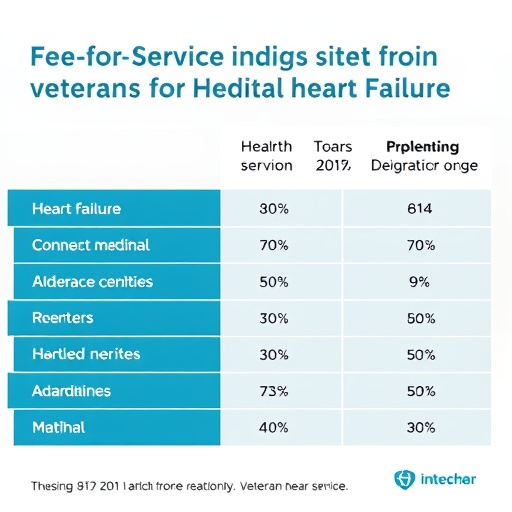In the verdant agricultural landscapes of Northern Thailand, an insidious health risk is weaving itself into the daily lives of farmers—a dual exposure to organophosphate pesticides (OPs) and polycyclic aromatic hydrocarbons (PAHs). Recent scientific investigations have begun to unravel how these two pervasive toxicants, individually known for their neurobehavioral impacts, combine to pose a potentially compounded threat with far-reaching implications for public health and environmental safety.
The cornerstone of this emerging research is a pioneering study authored by Sangkarit, Thammachai, Suwannakul, and colleagues, published in the 2025 volume of the Journal of Exposure Science and Environmental Epidemiology. The study probes the neurobehavioral performance of farmers who inhabit rural agricultural communities in Northern Thailand, where the simultaneous, chronic exposure to OPs and PAHs is an everyday reality. These compounds originate from two distinct but overlapping sources: OPs from intensive pesticide usage in crop cultivation, and PAHs predominantly from seasonal biomass burning, a common agricultural practice intensified by regional environmental conditions.
Organophosphate pesticides have long been scrutinized for their neurotoxic effects. Mechanistically, OPs inhibit acetylcholinesterase, an essential enzyme responsible for breaking down acetylcholine in neuronal synapses, leading to the accumulation of this neurotransmitter and subsequent disruption of neural transmission. Chronic exposure to OPs has been linked to cognitive deficits, motor dysfunction, and mood disorders, raising alarms about long-term neurological consequences for agricultural workers routinely handling these chemicals with insufficient protective measures.
On the other hand, polycyclic aromatic hydrocarbons arise from incomplete combustion of organic materials, such as the widespread biomass burning that takes place during agricultural cycles. PAHs are lipophilic compounds capable of crossing the blood-brain barrier, where they can induce oxidative stress and inflammatory responses within neural tissue. Epidemiological data have implicated PAHs in impairments of attention, memory, and psychomotor functions, setting a dangerous precedent for communities exposed to seasonal smoke and particulate matter laden with these toxins.
What sets the Northern Thailand scenario apart is the coexistence and overlap of these exposures. The research highlights that farmers face a dual burden, yet until recently, few studies have addressed the combined neurobehavioral impact of such concurrent exposures. The challenge is multifold: assessing exposure levels accurately, untangling individual versus synergistic effects, and establishing causality amidst myriad environmental and genetic variables.
The study employed a robust cross-sectional design, recruiting a representative cohort of farmers engaged in routine pesticide application and residing in areas affected by biomass burning. Neurobehavioral assessments were conducted using validated screening tools capable of evaluating memory, attention, psychomotor speed, and executive function. Blood and urine samples provided biomonitoring data, quantifying levels of OP metabolites and PAH biomarkers to correlate internal doses with observed neurological effects.
Findings revealed a staggering prevalence of neurobehavioral deficits significantly more pronounced in participants with combined biomarker elevations of both OPs and PAHs compared to those exposed predominantly to one toxicant. This suggests an additive or possibly synergistic neurotoxic effect, where the burden of combined exposures surpasses the sum of their individual impacts, underscoring the intricate interplay of chemical neurotoxicity.
Importantly, the study delineates the temporal dimension of exposure, noting that seasonal biomass burning creates spikes in PAH concentrations that overlap with periods of intense pesticide application. This convergence likely amplifies oxidative stress and neuroinflammation, key mediators in neurobehavioral impairment. The authors stress the urgency of integrating temporal exposure patterns into risk assessments to capture realistic exposure scenarios, something often overlooked in toxicological paradigms.
These insights not only deepen scientific understanding but also have vital policy implications. Agricultural workers in low- and middle-income countries often lack access to adequate personal protective equipment and are unaware of the compounded health risks posed by dual exposures. This study advocates for targeted interventions—ranging from stricter pesticide regulation and promotion of safer pest management techniques to community-based programs aimed at reducing biomass burning and enhancing health literacy.
Moreover, the research propels forward the concept of exposomics—the holistic study of environmental exposures throughout the lifespan—and its pivotal role in identifying complex exposure profiles relevant to neurological health. While the individual toxicity of OPs and PAHs has been studied extensively, examining them in unison, as this study does, represents a frontier in environmental health research poised to redefine exposure risk paradigms.
Beyond neurological outcomes, the implications resonate with broader environmental justice concerns. Rural agricultural communities often face disproportionate burdens of environmental pollutants without commensurate healthcare infrastructure or regulatory oversight. The intersection of occupational hazards and environmental pollution in Northern Thailand exemplifies the multifaceted challenges encountered globally in safeguarding vulnerable populations from insidious neurotoxic threats.
Looking ahead, the authors call for longitudinal investigations to monitor neurobehavioral trajectories and potential recovery following exposure mitigation. They also emphasize exploring genetic susceptibility factors that may modulate individual responses to combined toxicants, paving the way for personalized protective strategies. Complementary animal and cellular models could further elucidate underlying mechanisms and identify biomarkers predictive of early neurotoxicity.
In the grand tapestry of environmental health, this study stands as a clarion call to re-evaluate the cumulative risks of chemical exposures encountered in real-world settings. It highlights the necessity of interdisciplinary collaboration spanning toxicology, neurology, epidemiology, and social sciences to holistically address complex environmental threats. For farmers in Northern Thailand and similar communities worldwide, such research ushers in hope for informed interventions that can safeguard not only their livelihoods but also their cognitive well-being and quality of life.
As we deepen our understanding of how environmental mixtures impact human health, the urgent message is clear: single-chemical assessments are insufficient to capture the true scope of risks faced by exposed populations. This recognition is critical if public health policies are to evolve in step with scientific advances, ensuring that vulnerable communities receive the protection they deserve amidst changing environmental landscapes.
The intricate dance of organophosphate pesticides and polycyclic aromatic hydrocarbons within the brains and lives of Northern Thailand’s farmers underscores a universal environmental health challenge—the need for vigilance, innovation, and empathy in the face of invisible yet consequential chemical threats. The path forward lies in embracing complexity and leveraging science to foster healthier, more resilient agricultural communities worldwide.
Subject of Research: Neurobehavioral performance and effects of dual exposure to organophosphate pesticides and polycyclic aromatic hydrocarbons among agricultural workers.
Article Title: Neurobehavioral performance of dual exposure to organophosphate pesticides and PAHs among farmers in rural agriculture communities.
Article References:
Sangkarit, N., Thammachai, A., Suwannakul, B. et al. Neurobehavioral performance of dual exposure to organophosphate pesticides and PAHs among farmers in rural agriculture communities. J Expo Sci Environ Epidemiol (2025). https://doi.org/10.1038/s41370-025-00815-w
Image Credits: AI Generated
DOI: https://doi.org/10.1038/s41370-025-00815-w
Tags: agricultural practices and health riskschronic exposure to agricultural chemicalsdual exposure to organophosphate pesticidesenvironmental epidemiology in agricultureenvironmental health in Northern Thailandfarmers’ health and safetyimpact of PAHs on farmers’ healthneurobehavioral effects of toxicantsorganophosphate pesticide toxicitypesticide exposure and neurological healthpolycyclic aromatic hydrocarbons and neurotoxicitypublic health implications of pesticide use





